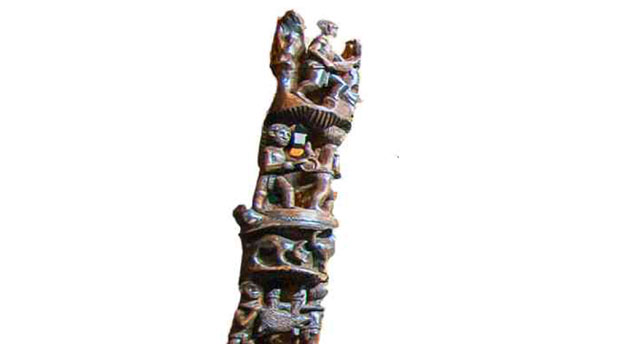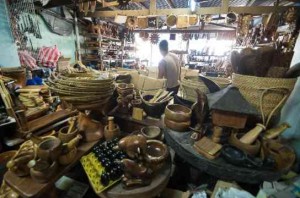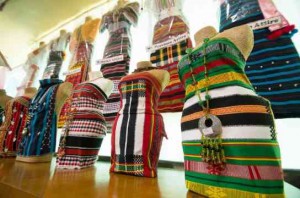
Talk about the perfect place to spend the summer and Baguio City’s cool mountain breeze readily comes to mind.
But is there anything new to see in this old haunt aside from the favorite hang-outs of yesteryears? Several generations have surely gone boating and strolling in Burnham Park or John Hay, horseback riding at Wright Park, shopping at Mines View Park, gawking at the Mansion House, and enjoying the blooms at The Botanical Garden (formerly Imelda Park).
Is there more to this mountain resort city than its parks, restaurants, ube jam, vegetables and ukay-ukay (used clothing)?
Here are five alternative destinations in Baguio City and nearby areas that tourists and even regular visitors can enjoy while soaking up the pleasant weather:
Mt. Sto. Tomas

This sleeping beauty has finally awakened from its deep slumber. For many years, only hikers, mountaineers and local residents marveled at its beauty. The roads were so rocky and steep that they’re accessible only by foot or a four-wheel vehicle. That is now a thing of the past. When the road leading to Mt. Sto. Tomas, the highest mountain in Baguio was cemented, the isolation ended and the view from the top began. Sitting at more than 2,000 meters above sea level, this dormant volcano offers a breathtaking view of Baguio City and the South China Sea on a clear, cloudless day.
Those who want to escape from pollution come here to clear their lungs. Mt. Sto. Tomas is so clean, green and serene that it attracts the young and old who simply want to relax and meditate. Trekking farther, one can reach Sitio Cabuyao in nearby Tuba, Benguet where the water reservoir, two giant pieces of radio relay equipment fondly called by the locals as “radar” and the weather station of the Philippine Atmospheric, Geophysical and Astronomical Services Administration (Pagasa) are found.
The residents who belong to Ibaloi and Kankana-ey tribes have transformed several areas into vegetable terraces, planting cabbage, potatoes, broccoli, carrots and lettuce. They also grow strawberries in their backyard which are free from pesticides. They say that the strawberries that come from Sto. Tomas taste better than those from La Trinidad, Benguet because they are organic.
Another reason to visit Mt. Sto. Tomas is the frigid weather. It’s two degrees cooler up there than Baguio. The single digit temperature is as common as the thick fog that envelopes the mountain. Frost is reported either in December or January when the mercury could drop to as low as 6 degrees.
How to get there: If you have a whole day to spare, take a jeep bound for Brgy. Dontogan and get off at the turning point where the police outpost is located. The police on duty can brief you about Sto. Tomas. The trek from the police outpost to Sitio Cabuyao takes one hour depending on your pace. If you just want to go sightseeing, take a cab. Fare is P150 to the water reservoir from the police outpost. Since public transportation is scarce, hire a taxi. One hour costs P300 and it’s enough for you to go from one place to another. Catch the sunrise or sunset. You’ll never regret it.
Arca’s Yard, 777 Tiptop Road

Travelers who simply want to spend a quiet time by reading, writing or doing paper work while enjoying the beautiful view of Mount Pulag should go to Arca’s Yard. Located in one corner of the tranquil Ambuklao Road, Arca’s Yard used to be one of the houses of the family of Ninja Sabado who is managing this bed and breakfast cafe.
“I was mourning my mother’s death and wanted to stay in a place with a fantastic view because that makes me happy,” Sabado says. She found herself spending most of the day in this house reflecting, doing artwork or household chores or being fascinated by the sunset until she decided to open the house to the public.
Sabado, an artist herself, slowly transformed the home to a mini museum, library and cafe. She displays her wide array of antique collection of wooden spoons from different Cordillera indigenous groups. She hauls her personal collection from her home in Outlook Drive where her husband’s furniture and antique shop is located and puts them here. The walls are decorated with the paintings and artworks of Baguio-based artists.
“I want to promote Benguet and Ibaloi culture. One way to do that is by opening Arca’s Yard,” says Sabado who is a native of Benguet.
Apart from the panoramic view, the guests can also feast on the food she offers that use organic vegetables. She bakes kamote cake and makes her own ice cream from strawberries, green tea and other fruits available in the market as well.
Beside Arca’s is the Art Studio Gallery where Japanese artist Asao Shimura holds workshops for kids and adults. There is an eco-walk 15 minutes from Arca’s Yard where tourists can see the cutflower farm and view the sunset.
How to get there: Take a cab to Tiptop Road. Fare from the town is less than P100. If you want to dine here, make a reservation two days before. The rooms or even the whole house can be rented. Call 0922-8251880.
Wood carving Village, Asin Road
An unassuming village along Asin Road is home to the world’s best wood carvers. The Ifugaos, who showcase their products in Asin, are known for turning an ordinary block of wood into something extraordinary. This was proven by one of its favorite sons—Ernesto Dul-ang—who bagged the gold medal in sculpture at the third Delphic Games in Jeju, Korea in 2009. The event serves as the artistic counterpart of the Olympic Games. Dul-ang also created the iconic totem pole that welcomes visitors to the Bell House inside the Camp John Hay Historical Core.
Dul-ang says the wood carving skills of the Ifugaos have been passed on from generation to generation. “You can find the best Ifugao wood carvers in Asin. The artists sell their products commercially there,” he says. One can find all sorts of wood products and sculptures in stalls along Asin road. There are furniture of various shapes and sizes, home décor, kitchen utensils, toys and souvenir gifts.
How to get there: Take a jeep bound for Asin. Fare is between P8.50 and P11. The terminal is located at the public market. If you take a taxi from Session Road, the fare is less than P100.
Bamboo Museum, Leonard Wood Road

There are two major attractions at the Bamboo Museum which opened to the public last year: the exhibit and the legendary White House.
The Asin Bamboo Carvers Guild Inc., a group of Ifugao wood carvers who settled in Tuba, Benguet, is showcasing its artworks at the Bamboo Museum every weekend.
For a fee of P50, tourists and art enthusiasts can appreciate the intricate designs of the artists who shifted to bamboo after wood became scarce.
The fee also includes a free tour of the ancient Laperal Mansion which is touted by the locals as a “haunted house.” The Victorian house, a style associated with affluence and extravagance, survived World War II and the 1990 killer earthquake.
How to get there: It’s a 15-minute walk from Session Road. Or take a jeep bound for Teacher’s Camp, Pacdal or Mines View because it passes by Leonard Wood. Fare is P8.50.
Easter Weaving Room Inc., Guisad
Anyone who wants to see the meticulous process of traditional cloth weaving practiced for ages by Cordillera women can go to Easter Weaving Room Inc. (EWRI). The weaving room is open to the public from 8 a.m. to 5 p.m. Monday to Saturday. “Many companies do not allow their customers to enter the work area. But not the Easter Weaving Room. We are proud to show the world how our native weavers produce export-quality materials. Cordillera women have a natural talent for weaving,” says Virginia Doligas, who manages EWRI.
People who are fond of handwoven products and native fabrics will be mesmerized by the colorful indigenous clothes, shoes and bags hand-loomed by expert weavers from Benguet, Apayao, Mt. Province and Apayao. Doligas says that they provide livelihood for young mothers by training them on making handwoven table runners, bed linens, bags, wallets, purses, footwear and rugs.
How to get there: Take a jeep bound for Guisad. Fare is P8.50. Jeep terminal is located behind Abanao Square. Or take a cab and the fare from Session Road is only around P60. •








































